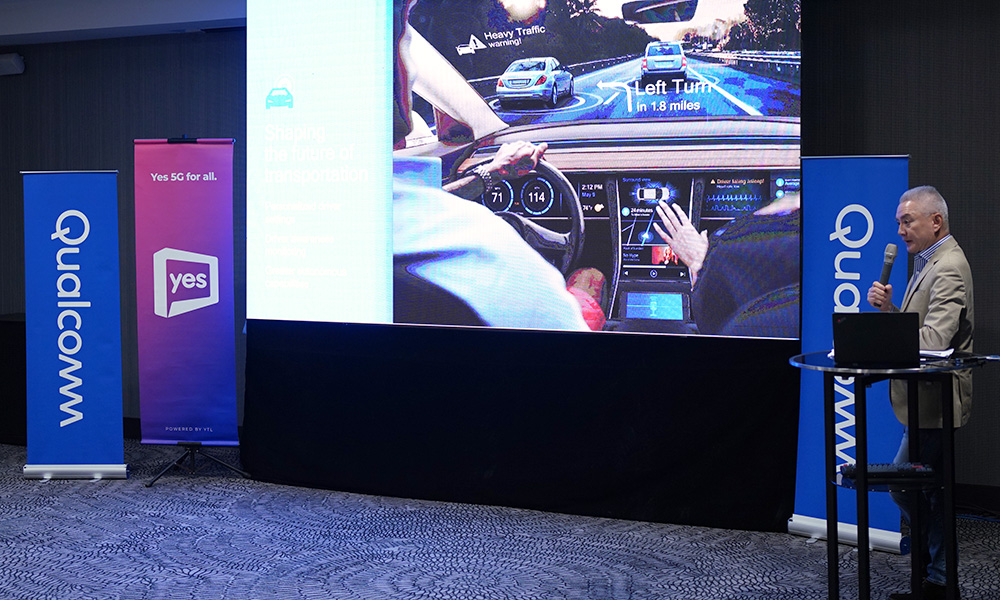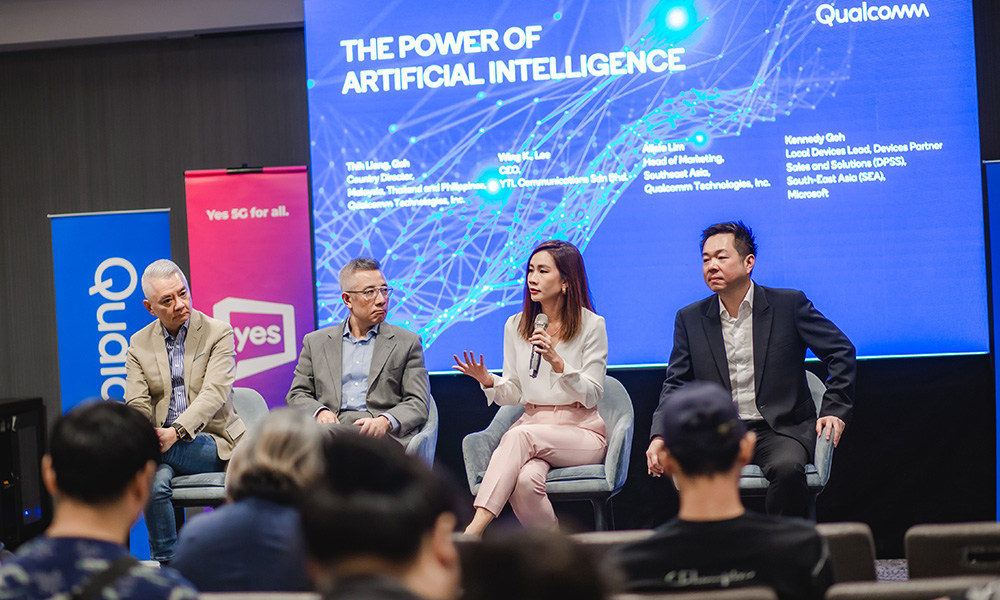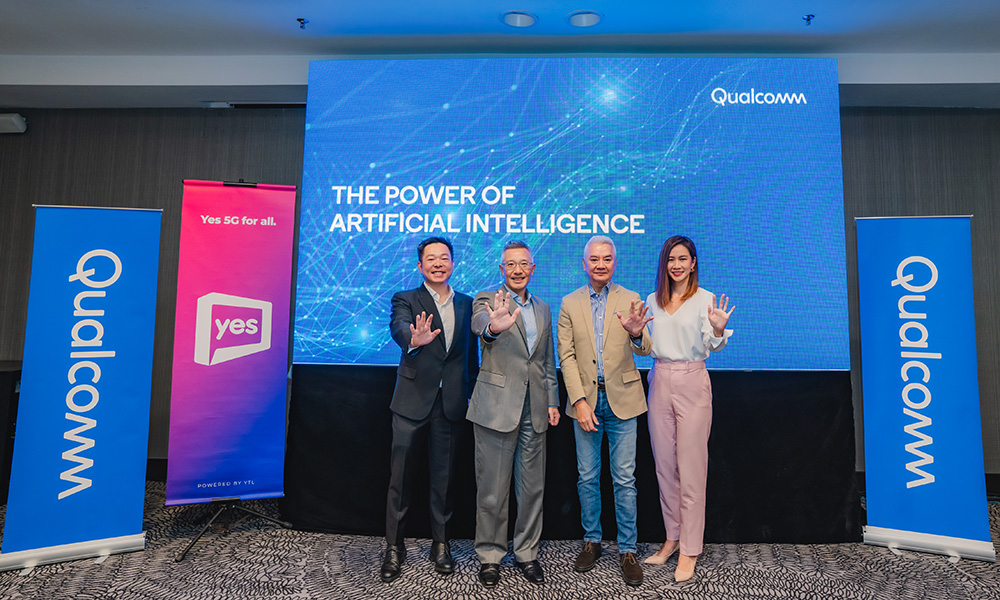Qualcomm Technologies, Inc held an event in Kuala Lumpur on 29 March 2023 to showcase its latest advancements in artificial intelligence (AI) and the potential of Connected Intelligent Edge. As part of its ongoing campaign, “The Edge of Possible”, the event highlighted the significance of driving edge computing innovations to transform industries, power new consumer experiences, and fuel the growth of the digital economy.

Bringing connectivity, data processing, and intelligence to the edge
- The Connected Intelligent Edge is the convergence of 5G networks, edge computing, and AI. This integration allows data to be processed and analyzed in real-time, allowing faster decision-making and response times. As a result, various industries, including manufacturing, transportation, and security, can take advantage of this technology.
- In healthcare, Connected Intelligent Edge devices monitor patients in real time, providing medical professionals with vital data to provide better care. For example, these devices can track a patient’s vital signs, such as blood pressure and heart rate, and send the information to healthcare providers in real-time. This method allows medical professionals to identify issues and take appropriate action quickly.
- Connected Intelligent Edge devices are being used in transportation to make vehicles safer and more efficient. For example, sensors placed throughout a car can monitor its performance and provide real-time data to the driver, alerting them to any issues. The information can help prevent accidents and improve fuel efficiency, reducing costs and environmental impact. In addition, the technology can create smarter, more efficient transportation systems, improving traffic flow and reducing congestion.
- Connected Intelligent Edge technology has the potential to revolutionize the way we live, work, and interact with each other. With its ability to collect, process, and analyze vast amounts of data in real-time, the Connected Intelligent Edge technology enables us to create a more efficient, safer, and innovative world.

Keeping enterprise environments safe with smart devices at the Connected Intelligent Edge
- Connected intelligent camera solutions can secure and safeguard enterprise environments, transform enterprise security and public safety segments, and optimize business operations.
- Three technology trends driving innovation in camera technology for the security industry are:
- Security camera sensors are rapidly transitioning from Full HD (FHD) to 4K resolutions. Camera makers are adding multiple sensors to a single camera unit, enabling higher utilization of the underlying hardware.
- Modern security cameras have increased compute capabilities, and companies are innovating with newer machine-learning models for various use cases:
- people and object detection,
- classification
- people counting
- vehicle recognition
- 5G provides low latency and high bandwidth, introducing security cameras to various new use cases, from mission-critical emergency services to smart factories and smart cities.
- The AI Box is an intelligent edge device that supports traditional IP camera video streams to be offloaded and processed via the box — powered by system-on-chip(SOC)s designed for high compute and high concurrency of machine learning-based analytics across multiple camera streams.
- For instance, the Qualcomm QS8250 and Qualcomm QRB5165 can decode incoming video streams and run AI models on each stream concurrently, requiring very little power to operate. Furthermore, 5G enables more time-sensitive and bandwidth-intensive applications.
- The AI Box approach is aligned with the industry’s shift from video management software (VMS) to Video software as a service (VsaaS) implementation, enabling businesses to optimize their operations, increase profits, and strategize growth.
- Eventually, the industry will observe growth in edge AI Boxes and advanced AI cameras that improve businesses’ quality and productivity and efficiency and safety in cities.

Driving the convergence of the PC and mobile to increase productivity
- New digital tools and increased online collaboration have become the norm. Thus, there is a greater need for mobile computing devices that deliver new performance levels with incredible power efficiency and fast, reliable connectivity from virtually anywhere.
- This new era of productivity and entertainment also requires high-quality cameras and audio for a clear and crisp virtual presence, dedicated on-device AI processing to power interactions with incredible power efficiency, and enhanced security tools. Here’s how AI features are improving work for hybrid employees:
- Enhanced and more natural video conferencing. AI-enabled PCs offer improved video conferencing experiences, including noise suppression, background blur, auto-framing, and eye gaze correction. Qualcomm and Microsoft collaborated on Snapdragon to enable these new AI-accelerated experiences for Windows 11 — without impacting performance and power efficiency. Instead, Snapdragon intelligently offloads these computationally intensive tasks to a dedicated AI engine, which frees up the CPU and GPU resources.
- Advanced security and privacy. AI is powering new remote device management protocols, zero-touch deployments and advanced endpoint security because a large portion of the workforce is no longer on-site. AI in PCs can also use Wi-Fi as a proximity detector to better secure the privacy of PCs. For example, the PC can wake when it detects a user sitting down and secure it when the user leaves their desk.
- More power for intensive computing tasks. Adding on-device AI processing to powerful CPU and GPU capabilities adds the ability to offload compute-intensive processes. As a result, performance is dramatically increased, delivering a higher user experience. Snapdragon compute platforms offer AI-accelerated user experiences to reach a new level of mobile computing performance.
- Power saving and efficiency. Traditional x86-based systems primarily rely on CPU and GPU for compute-intensive modeling. By leveraging the dedicated AI engine, Snapdragon delivers all these experiences on the AI engine while freeing up CPU and GPU resources and optimizing for extended battery life.
- Tools to improve productivity and power innovation. The application ecosystem is the lifeblood of the end-user experience. As applications are optimized for Snapdragon, developers can start to take advantage of the on-device AI and have access to new ways to personalize the user experience. For instance, when a user is editing photographs, the creative application can automatically make adjustments that improve the image.
- Chip developers are integrating artificial intelligence capabilities into enterprise PCs, which will become more prevalent. The aim is to provide enterprises with the right computing power to run their workforces effectively. On-device AI enables software applications to take full advantage of AI capabilities. The goal is to provide consumers with an optimized experience, enhancing the software, hardware, and connectivity and ensuring no obstacles between users and their aspirations.
Ads by Google
